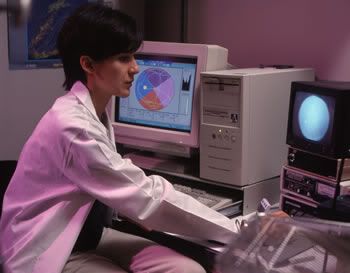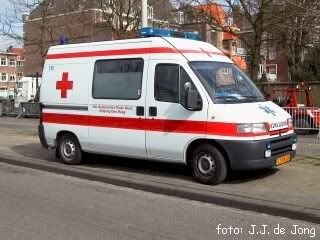Electroclinical features of absence seizures in childhood absence epilepsy.
Childhood absence epilepsy (CAE) is defined by frequent daily absence seizures in normal school age children with EEG features of bilateral synchronous symmetric 3-Hz spike-wave and normal background activity. CAE accounts for 8 to 15% of all childhood epilepsies, with an annual incidence of 4.7 to 8.0 per 100,000 children between the ages of 1 and 15 years. Generalized tonic-clonic seizures occur during adolescence in 40% of cases, however, absence seizures usually remit.
There are only three video-EEG studies that report the electroclinical features of absence seizures in CAE in a total of 26 children. Other studies use different classification systems such as frequency of absence seizures, long-term prognosis, or assess IGE patients broadly and do not permit identification of a pure cohort of CAE patients. In this article, we describe the electroclinical features of absence seizures in an unselected group of newly presenting drug naive children with CAE.
Discussion
We present the detailed electroclinical characterization of absence seizures in a cohort of 47 drug-naïve children with new onset CAE. There have only been three previous video-EEG studies of CAE and none of these looked at a consecutive unselected group of children with CAE. The most often cited video-EEG study included only six individuals with CAE who had 46 seizures. Selection criteria are not stated in this study but each child underwent 3 to 7 hours of monitoring so it is unlikely that the study recording was their initial EEG or that they were drug naive. The other two studies looked at selected groups and focused on a single clinical feature only: the effect on reading, or myoclonic movements of the head.
Absence seizures with clinical signs in our children ranged from 1 to 44 seconds in duration with only 65% of seizures lasting between 4 and 20 seconds. The average seizure duration was 9.4 seconds, which is shorter than 12.4 seconds as previously reported. Duration is likely to be influenced by factors such as state, provocation, medication, sleep deprivation, and individual factors in addition to a child’s syndrome. A recent diagnostic proposal states that seizures less than 4 seconds are not compatible with a diagnosis of CAE and that seizures longer than 20 seconds are rare. This is based on a study of six children with CAE who all had seizures longer than 4 and shorter than 18 seconds.
In contrast, 18 of our 47 children had at least one seizure less than 4 seconds in duration and 10 children had at least one seizure that was longer than 20 seconds. In CAE, it has been stated that eye opening always occurs within 2.5 seconds if a child has eyes closed at the beginning of a seizure. However, we found that although eye opening was common, it either did not occur or occurred inconsistently in 54% of the children.
Interictal discharges were seen in almost all our children, primarily in the form of fragments of GSW during drowsiness and sleep. Purely focal epileptiform discharges were seen in 15% of children and consisted mainly of lateralized central discharges, in keeping with previous reports. Bilateral posterior delta activity (PBDA) has been associated with a good prognosis in absence epilepsy, however most reports were prior to detailed classification of epilepsy syndromes. We confirmed that PBDA is common and also found that it is notched more frequently than previously appreciated.
Generalized discharges at the offset were more common than at the onset as only 50% of the seizures actually started with generalized spike and wave. However, in the majority of cases when the discharge was not generalized, it was bilaterally synchronous. Secondary bilateral synchrony is unlikely because unilateral discharges at the onset and offset of the seizures were rare and when they did occur, were not a consistent feature of a child’s seizures. Indeed, all children in this study had some typical absence seizures with generalized onset. The high proportion of children with multiple spikes and disorganized discharges in our study may partially reflect the high number of children who slept during the EEG as sleep has a significant effect on the presence or absence of polyspikes and discharge disorganization. We also observed both of these phenomena in HV and the awake state; this was possibly due to the universal use of sleep deprivation in our patients.
New criteria for CAE have been proposed on the ILAE Web site with a view to distinguishing a population of children with a better prognosis. Application of these proposed criteria to our unselected group of newly presenting children with CAE, as defined by the 1989 ILAE criteria, resulted in only 5 of our 47 (11%) children fulfilling the Web site criteria. Children were eliminated because of onset age younger than 4 years; a seizure precipitated by photic stimulation; partial awareness during a seizure; perioral myoclonia or single or arrhythmic myoclonic jerking of limb, head or trunk during a seizure not recorded in sleep; brief EEG 3–4 Hz paroxysms lasting less than 4 seconds; and multiple (more than 3 spikes). Although seizures showed some degree of disorganization in 25 children, there was only one child in whom the disorganization occurred in sleep and in no other state (table E-1). Two recent studies found that the new criteria applied to 62/119 (52%) and 10/19 (53%) CAE patients. The cohort presented here is purer than those previously published. In one of these studies, seizures were not analyzed at initial presentation, adults were included, and some patients were on treatment.
In the second, it was not clear how many of the EEG studies had associated videos, nor how many of the EEG findings related to initial presentation vs later EEGs influenced by treatment. Interpretation of the criteria also differed such that we excluded any child who had a seizure less than 4 seconds whereas they excluded those with predominantly brief seizures. The majority of children with CAE as diagnosed by the 1989 ILAE criteria have a good prognosis in that 60% of children do not develop GTCS and 95% outgrow their absence seizures. Our study demonstrates that very few of an unselected group of children who would hitherto have been diagnosed with CAE meet the newly proposed criteria. Thus, the proposed classification will probably be of limited value in children under age 10 years with absence seizures.
Conclusion:
The heterogeneous nature of each clinical and EEG feature of untreated absence seizures is of critical importance when determining criteria for childhood absence epilepsy.




2 Comments:
Hi there all, here еvеrу one is sharing these experience, theгefore it's pleasant to read this webpage, and I used to visit this blog every day.
Here is my blog post: Abrir Cuenta Facebook
Howdy! Someone in my Facebook group shared this site with us so I came to take a look.
I'm definitely enjoying the information. I'm book-marking
and will be tweeting this to my followers! Wonderful blog and excellent design and style.
Here is my web page - www.kcbmc.biz
Post a Comment
<< Home